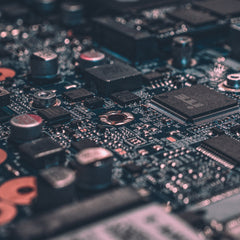When most people think about connected systems, they picture the final experience: a smart thermostat that adjusts automatically, a factory floor where machines talk to one another, or a logistics network that updates shipment status in real time. What often goes unseen is the architecture behind those experiences. Every connected system, no matter how simple or complex, is built on four essential elements: sensors, gateways, protocols, and cloud platforms.
Sensors: Where Data Begins
Consider a smart home thermostat. Its ability to adjust the temperature depends on tiny sensors that measure heat and humidity throughout the day. In an industrial setting, vibration sensors might be installed on machines to detect early signs of wear before a breakdown occurs.
The principle is the same across industries: sensors capture the data that drives decisions. If the sensors fail, the entire system loses value. Businesses that invest in accurate, durable sensors gain more reliable insights, whether that means more comfortable homes, more efficient energy use, or fewer costly shutdowns on the factory floor.
Gateways: Translating and Filtering Information
Once data is collected, it needs a way to move from the sensor to the rest of the system. That is where gateways come in. In a smart building, gateways connect dozens of lighting and HVAC sensors to a centralized system, ensuring that only useful information gets transmitted. In a smart factory, gateways handle thousands of inputs at once, filtering out irrelevant noise while passing critical data on for analysis.
This local processing reduces bandwidth use, trims storage costs, and enables faster responses. For example, if a vibration spike suggests a machine is about to fail, the gateway can trigger an immediate alert without waiting for cloud confirmation. That kind of responsiveness not only prevents downtime but also saves money.
Protocols: Making Devices Speak the Same Language
Imagine trying to run a meeting where every participant speaks a different language. That is what happens in connected systems without consistent communication protocols.
Protocols like MQTT, CoAP, Modbus, or the newer Matter standard provide the common “language” that keeps devices interoperable. In the home, this ensures that smart plugs, lights, and thermostats from different manufacturers can work together. In industrial environments, standardized protocols prevent vendor lock-in and allow systems to scale as new equipment is added. The payoff for businesses is flexibility - avoiding expensive redesigns while staying open to innovation.
Cloud Platforms: Turning Data into Action
The final building block is the cloud platform, where raw data is transformed into intelligence. In consumer systems, this might mean an app that shows energy usage trends and suggests ways to save. In a smart factory, cloud platforms aggregate data from hundreds of machines, apply analytics, and predict maintenance needs weeks before an issue arises.
Cloud platforms also allow organizations to expand quickly. A logistics company can start by tracking one warehouse and later scale its system to monitor an entire global network, all without building new infrastructure from scratch.
The Real Value Is in Integration
Each of these building blocks, sensors, gateways, protocols, and cloud platforms, delivers value on its own. But when they are integrated seamlessly, the benefits compound. A smart thermostat becomes a full smart home system. A predictive maintenance tool becomes an entire smart factory. The ROI comes not only from efficiency gains but also from entirely new business models enabled by connectivity: subscription services, real-time monitoring offerings, or energy optimization programs.
Building It Right with Grid Connect
Designing a connected system that balances technical performance with business impact is not simple. The right sensors must be matched with the right gateways, protocols need to be carefully selected, and the cloud architecture has to be built for scale and security. Grid Connect helps businesses navigate these choices with end-to-end IoT ecosystem solutions. From smart homes to smart factories, we make sure every building block is in place to deliver systems that are reliable, scalable, and designed with ROI in mind.







